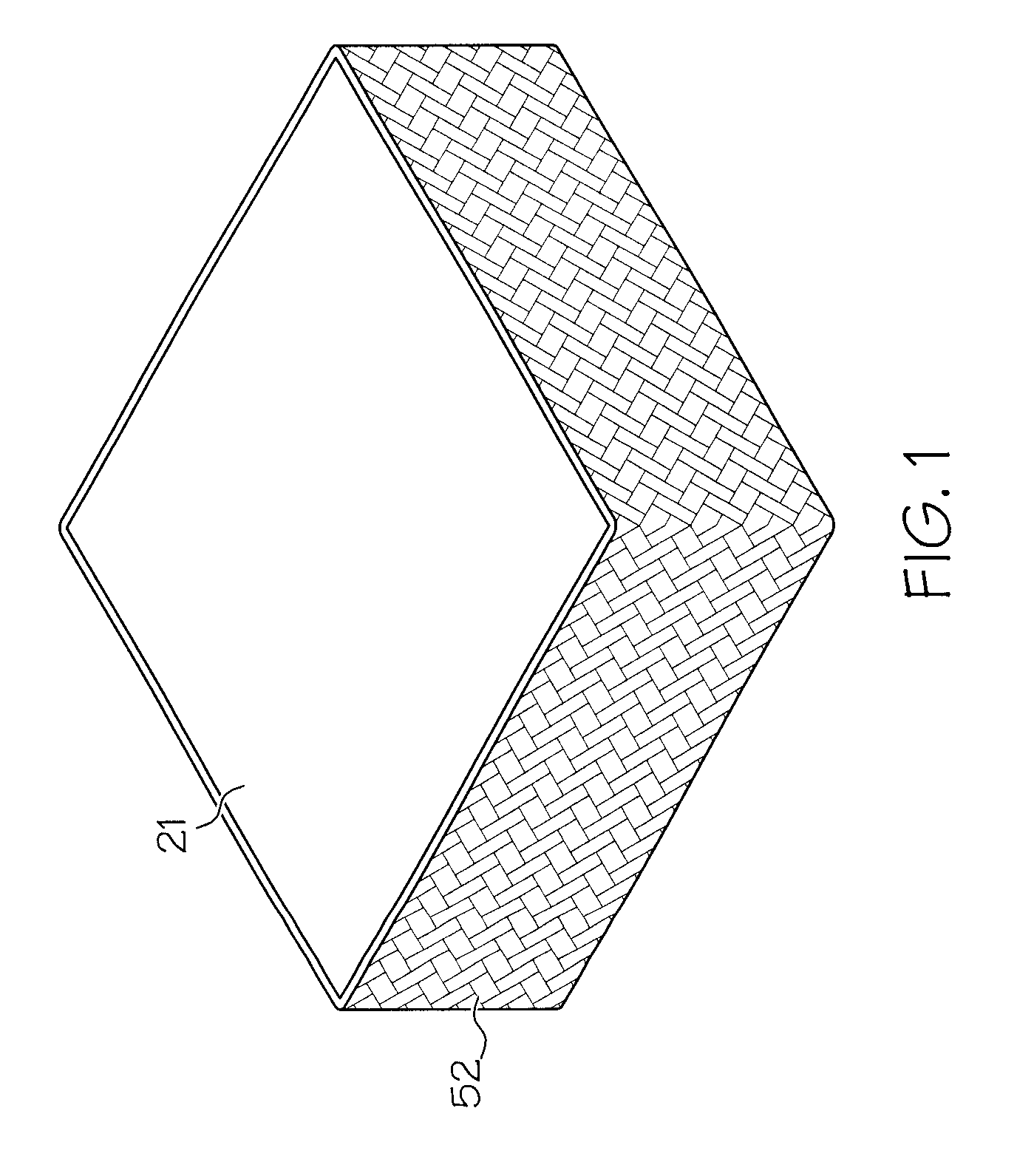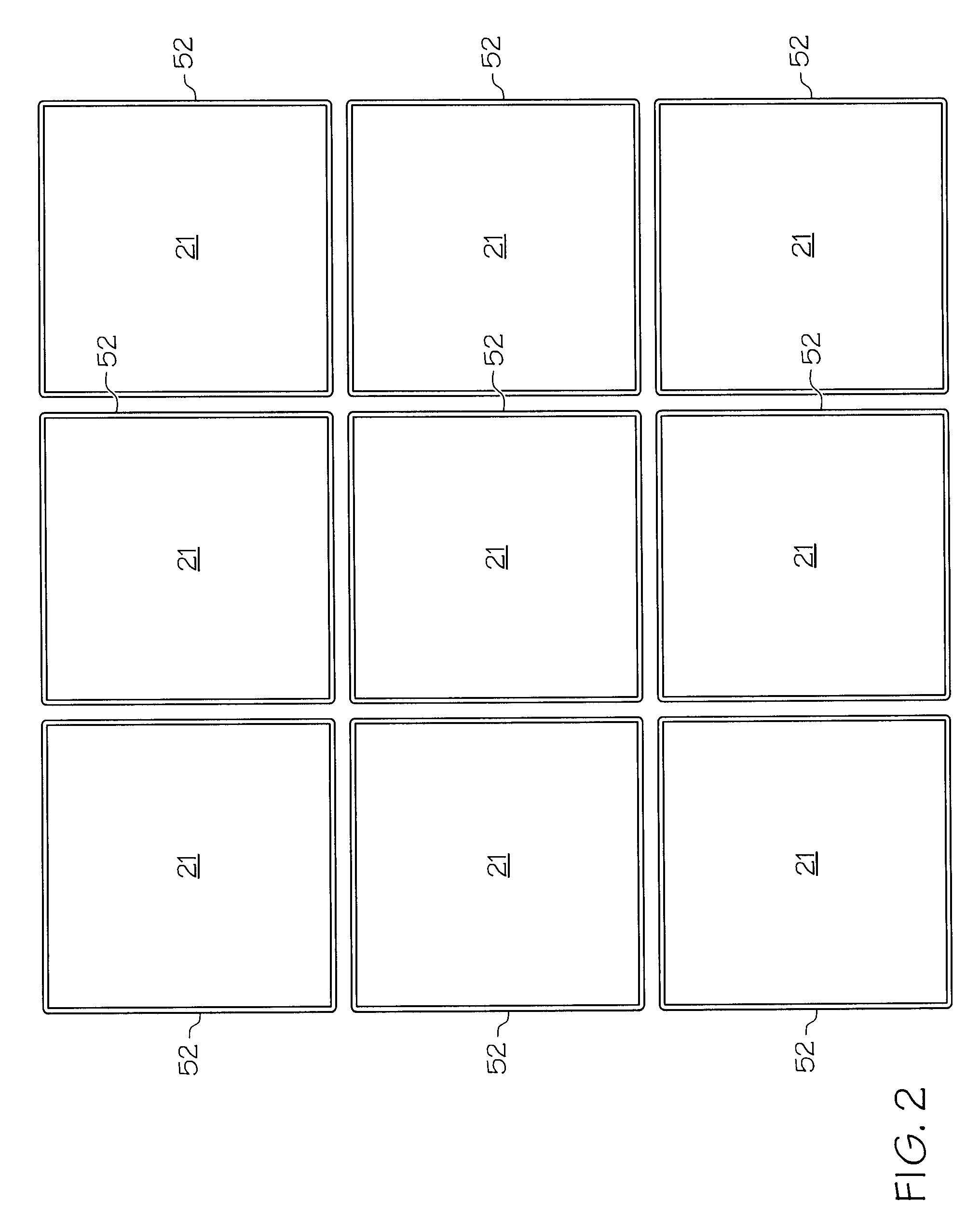Composite Armor and Method for Making Composite Armor
- Summary
- Abstract
- Description
- Claims
- Application Information
AI Technical Summary
Benefits of technology
Problems solved by technology
Method used
Image
Examples
example 1
Manufacturing Composite Armor Panel
[0053]Process for cleaning ceramic tiles (21):[0054]1) The ceramic tiles (21) were cleaned along all six surfaces via a mechanical blasting process using Aluminum Oxide media across the entirety of the surfaces.[0055]2) The ceramic tiles (21) were further cleaned in a solvent to remove residual dust, oils, and other contaminants not removed completely by the blasting process.
[0056]Process for edge wrapping ceramic tiles (21):[0057]1) The ceramic tiles (21) were loaded onto a winding mandrel and the liquid crystal polyester-polyarylate fiber was wrapped around the 8 mm-thickness edge of the ceramic tiles (21).[0058]2) The liquid crystal polyester-polyarylate fiber was wound in the following manner: Three rows of three liquid crystal polyester-polyarylate HT1500 / 300 / T150 yarn, epoxied at corners (61.26% Epon Resin 828, 26.24% Epodil 757 and 12.50% Epi-Cure 3200), gapped (three tows per edge) single edge wrapped.[0059]3) The epoxy was allowed to cure ...
example 2
Comparison Armor Panel
[0085]A composite armor panel was made according to procedure in Example 1, except the hyperelastic polymer (31) was substituted with a non-hyperelastic polymer shown below.
[0086]A polymer resin was formed from an MDI-terminated prepolymer with a polypropylene glycol backbone (Baytec MP-210), 1,4-butanediol (a short-chain curative), an ethylene-glycol capped polypropylene glycol triol with a molecular weight of approximately 6000 (Mutranol 3901), and a catalyst system containing a 4:1 blend of a tertiary amine catalyst and a tin-based catalyst. The ingredients were degassed, mixed at room temperature, and poured into a hot mold to make a composite armor panel. The panel was allowed to cure in the mold at a temperature of about 93° C. to 110° C. for a minimum of 30 minutes before being removed from the mold and post-cured.
example 3
Ballistic Test
[0087]Testing of Example 1 and 2 armor panels was performed to NIJ Level IV standards with a 7.62 mm AP M2 at ˜2,850 fps. After the test the panels were examined and it was found that the back plate delaminated from the strike face of the Example 2 armor panel, while the back plate did not delaminate from the strike face of the Example 1 armor panel.
PUM
| Property | Measurement | Unit |
|---|---|---|
| Fraction | aaaaa | aaaaa |
| Fraction | aaaaa | aaaaa |
| Percent by mass | aaaaa | aaaaa |
Abstract
Description
Claims
Application Information
 Login to View More
Login to View More - R&D
- Intellectual Property
- Life Sciences
- Materials
- Tech Scout
- Unparalleled Data Quality
- Higher Quality Content
- 60% Fewer Hallucinations
Browse by: Latest US Patents, China's latest patents, Technical Efficacy Thesaurus, Application Domain, Technology Topic, Popular Technical Reports.
© 2025 PatSnap. All rights reserved.Legal|Privacy policy|Modern Slavery Act Transparency Statement|Sitemap|About US| Contact US: help@patsnap.com



